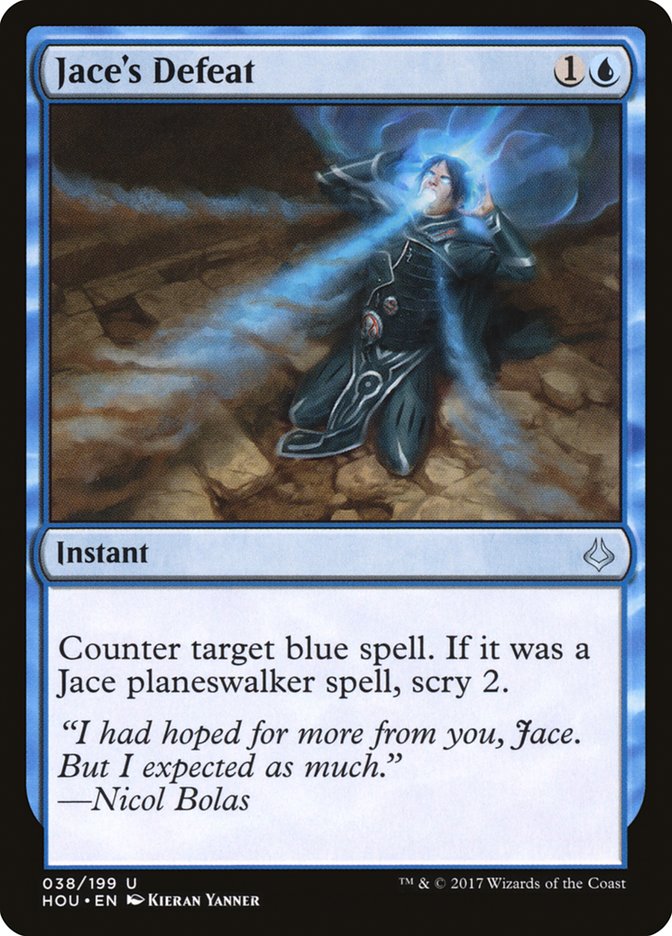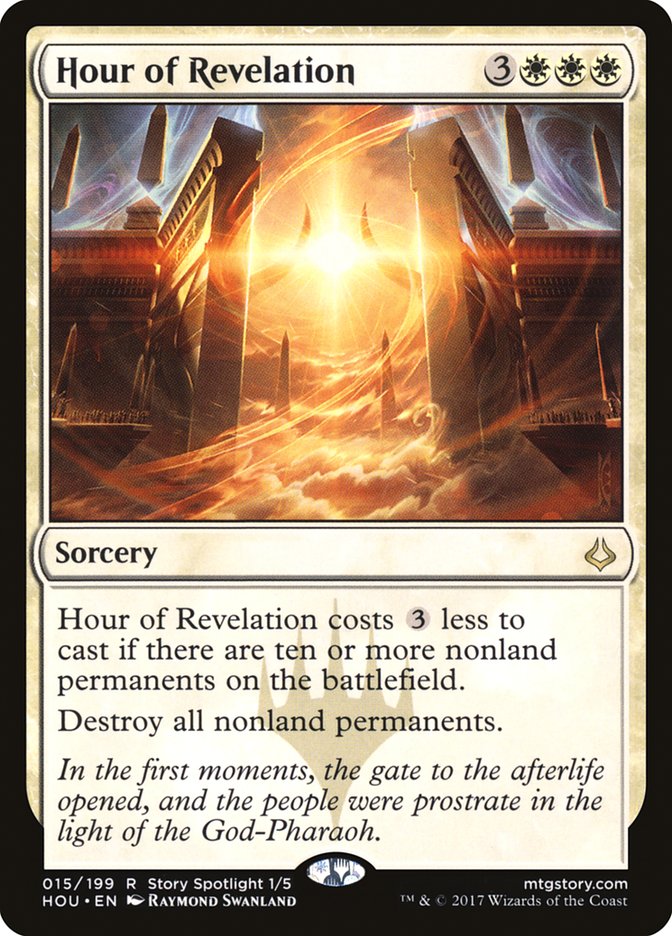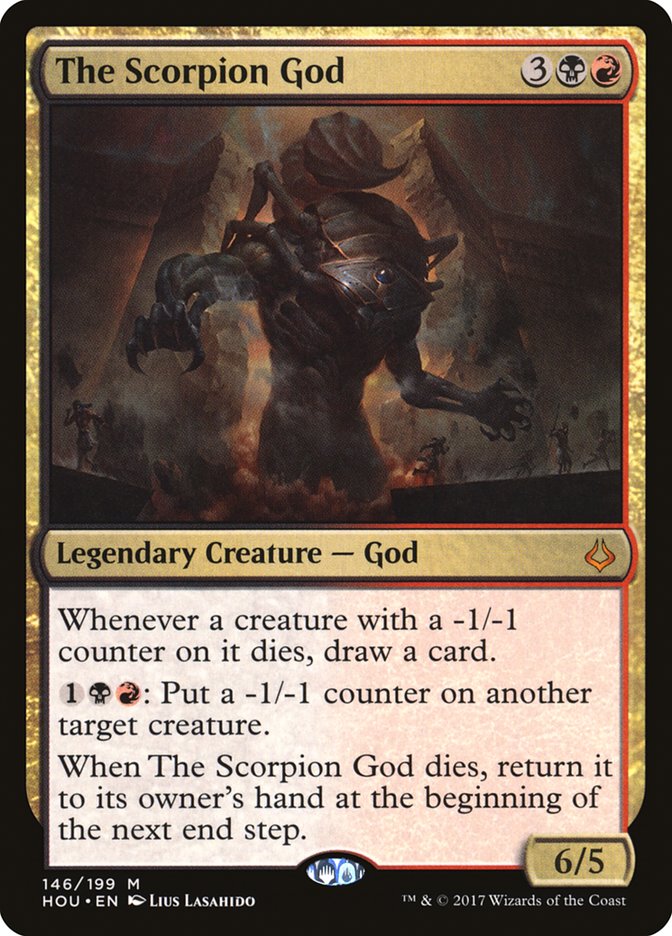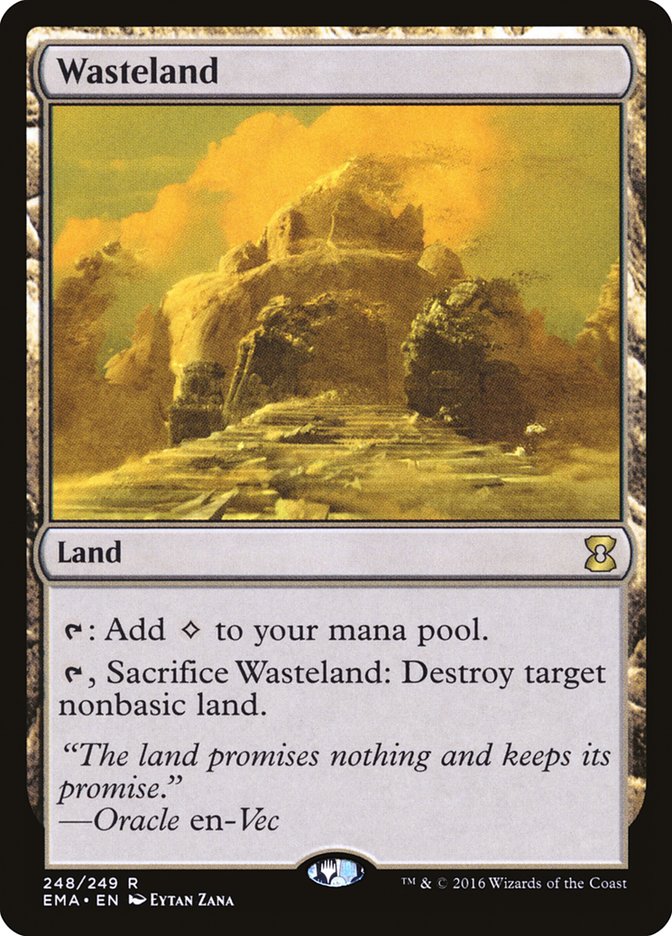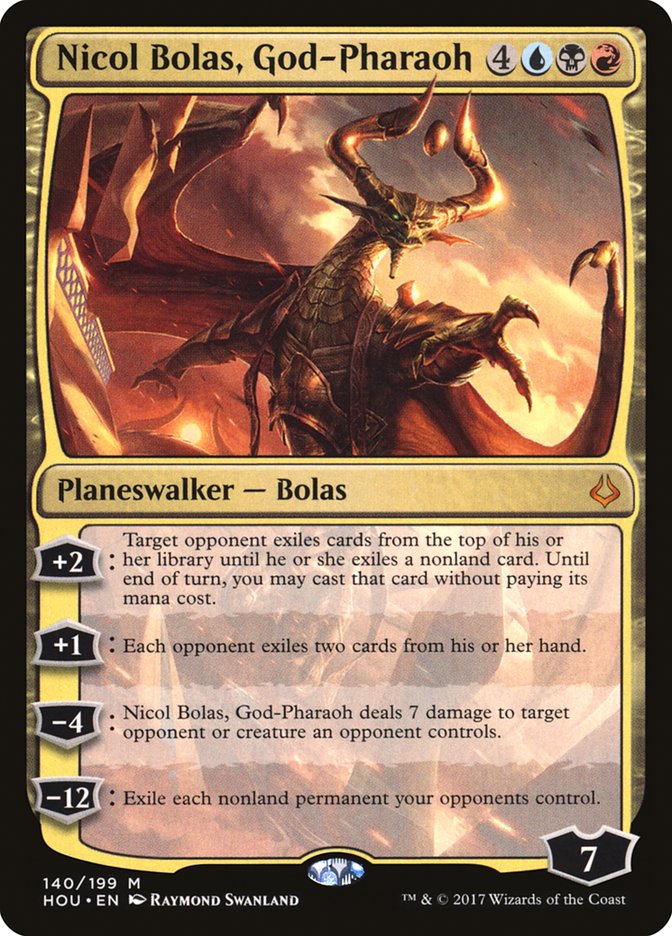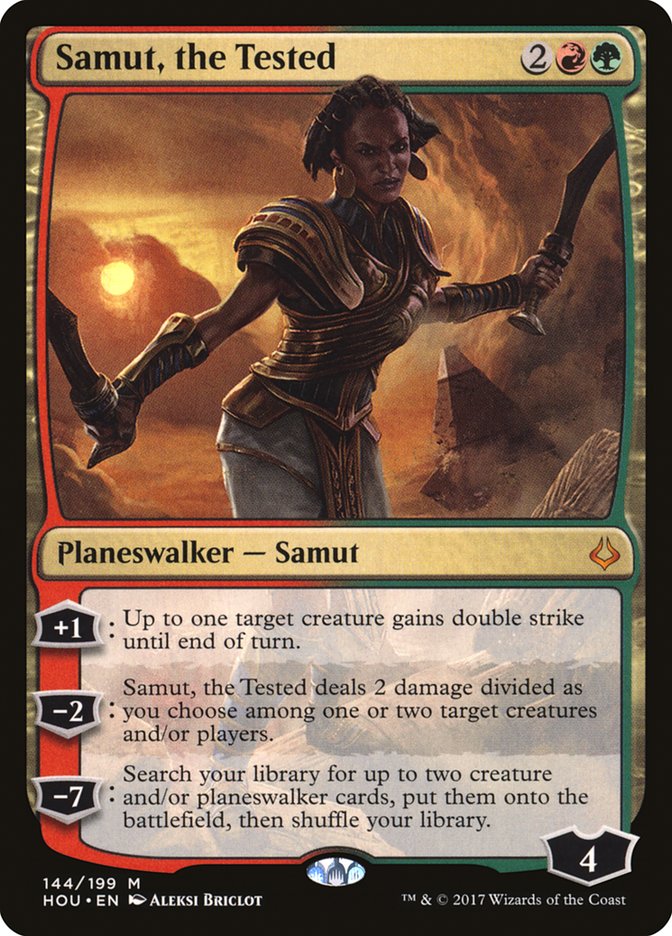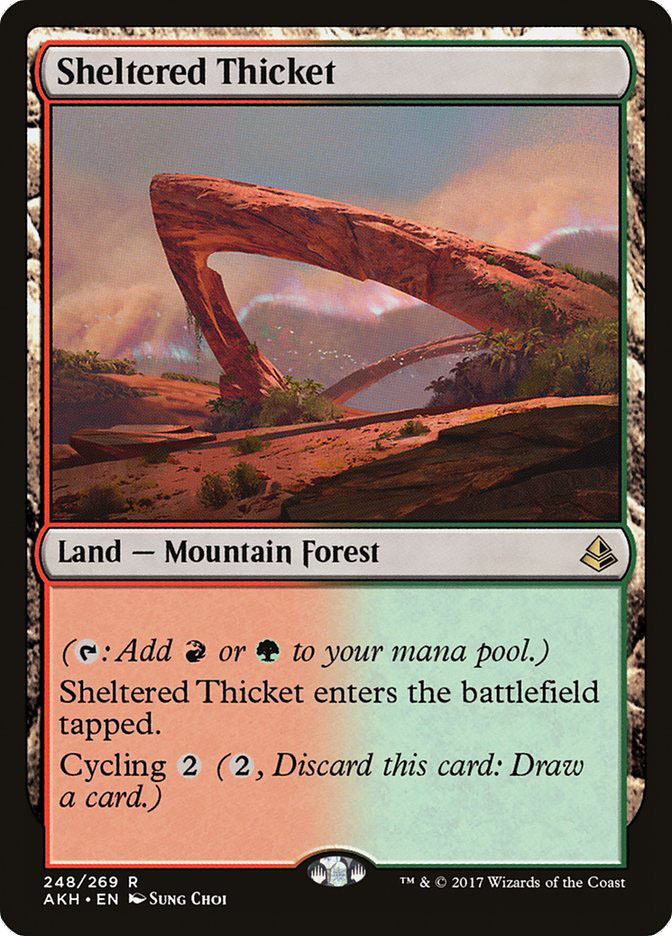While Hour of Devastation previews aren’t in full swing, a solid portion of the set has been revealed in various forms. Similar to Amonkhet, there isn’t an obvious build-around theme in the mechanics, so few of the cards are going to be obvious inclusions in lists.
I’m opting to focus on context. This is the early exposition phase of the set and it’s a small set entering a large format. I want to consider what conditional applications all of the cards might have before diving in.
Similar to the Theros self-hate cycle, the Hour of Devastation Defeat cycle is going to have varying impacts. This should be obvious, as certain planeswalkers are more capable of hobbling around than others. Liliana can get Zombie feet!
Of the list, Jace’s Defeat is by far the most relevant one. There isn’t a counterspell in Standard that hits Torrential Gearhulk, Glimmer of Genius, and Dissolve at the same time. I almost typed Void Shatter there; then I realized that doesn’t work out and is a possible reason to switch to that spell for your three-mana hard counter.
Liliana’s Defeat is the next-best (translated on Reddit here). A one-mana kill spell is great. It is a bit awkward that G/B Energy only really has Winding Constrictor and maybe Glint-Sleeve Artisan to hit with it, but it’s going to hit against Zombies.
Chandra’s Defeat is fine (translated on Reddit here). It kills a Glorybringer and Chandra, Torch of Defiance out of decks that may have issues dealing the fourth point against Glorybringer. Past that, it’s not super-exciting and the efficiency drop-off relative to one-mana Liliana’s Defeat is really annoying if people start actual Red Deck-ing you.
Gideon’s Defeat is comical.
Bolas: Come at me and I shall crush you!
Gideon, AoZ: Nah I’m cool just making Knight Allies and Emblems over here. https://t.co/SVKmphszAV— Ari Lax (@armlx) June 16, 2017
The one place it will see play is if you need to be hyper-efficient against a Humans-style aggro deck. Past that, it’s just situational nonsense.
Nissa’s Defeat is probably the worst of the bunch (translated on Reddit here). I don’t see the incentives to go big mana in green right now, so Ice Storm isn’t a card I want to play. That leaves it with no good fail case. Unless you really want planeswalker Slay, I’m off it.
Don’t delude yourself into thinking Hour of Revelation will cost three mana.
Instead, get pumped for wrecking your opponent’s Heart of Kiran; Gideon, Ally of Zendikar; and creatures at the same time. There are only so many six-mana sweepers you can play, but we’ve needed a Planar Cleansing in that spot for a while. Archangel Avacyn is annoying, but it doesn’t save the noncreatures, so if you can survive the return attack, you aren’t in the worst shape.
I’m having Flashback to losing over and over to Olivia Voldaren. Standard, Limited, Modern, doesn’t matter.
The Scorpion God isn’t quite as efficient, so you might survive a turn of them activating it. The card draw aspect is also overkill, as when The Scorpion God is good, spending your mana to activate the God is as good as most of your spells. It’s still just as much of a miserable machine gun effect for any small deck and a midrange mirror-breaker.
If there is an R/B deck interested in a five-cost finisher, this is a card I expect to see often. I expect these decks to look a lot like the W/B midrange decks that popped up in Shadows over Innistrad Standard. Jund is also interesting, but at that point your best options are Traverse the Ulvenwald and Ishkanah, Grafwidow, which both eats up five-drop slots and makes having double black and double red to activate The Scorpion God multiple times a turn harder. Switching to red costs you Cast Out as a draw fixer and generic answer, but Never//Return covers a lot of that needed flexibility in a post-Aetherworks Marvel world and Abrade covers the rest.
The question to answer is if you want to get a little aggro to support Unlicensed Disintegration. This would likely look like a bulkier B/R aggro deck from early in the Aether Revolt Standard season. Considering Mardu Vehicles has had luck moving up the curve, I wouldn’t be shocked if this deck can do the same.
That hype excluded, you are fighting for space with Glorybringer and Ob Nixilis Reignited here. In the above Unlicensed Disintegration deck, it’s actually likely Glorybringer is better to close quickly. The Scorpion God is going to being those for the slot if you are concerned with making spot removal dead or picking off stray creatures that would otherwise prevent you from establishing a planeswalker.
Ramunap Excavator: In terms of play applications, I’m not interested in it in Modern aside from Todd Stevens-style Azuza, Lost but Seeking plus Collected Company and Ghost Quarter nonsense. In Legacy, I’m excited to build for it, but I’m concerned about trying to recur Wasteland in a heavy Deathrite Shaman format.
What I’m most excited about is when Wizards plants Eternal staples that are really thematic to the plane they exist on. There’s a bunch of reprint value to having generic names like Sacred Foundry that can exist anywhere, but it’s awesome to have a bit of the history of where the game has been survive through the years. Crucible of Worlds has existed for almost fifteen years and seen consistent play, so Ramunap Excavator likely has a long life ahead of it, and as a result Amonkhet and Hour of Devastation will exist actively in people’s memories that whole time.
Abrade is obviously a really good card. It is competing with Harnessed Lightning, except often I want six or so of that card in my decks, so it isn’t really a competition.
Abrade likely puts a lot of deck construction pressure on Winding Constrictor decks, as it killed 8/8 Verdurous Gearhulks and all of the small stuff. This is a good argument for Greenbelt Rampager and Tireless Tracker as key parts of your creature base and a reasonable argument against the Heart of Kiran and splashed Unlicensed Disintegration Jund lists.
Abrade puts a lot of pressure on Mardu Vehicles to draw Gideon, Ally of Zendikar. It also pushes you towards more five-drops, which is an interesting competition between Glorybringer and Archangel Avacyn. In Mardu Vehicles it likely also replaces most of your Release the Gremlins due to having a powerful fail case.
Abrade kills Torrential Gearhulk and Dynavolt Tower. I don’t want to be Shattering stuff against control, but this Game 1 usefulness points towards it being great. Harnessed Lightning also kills Torrential Gearhulk, but the second Harnessed Lightning can struggle against the second Torrential Gearhulk.
In the vein of Nicol Bolas, Planeswalker and Cruel Ultimatum, Nicol Bolas, God-Pharaoh is a legit end-game bomb. It has an ability that dominates in almost any game state.
+2 puts Nicol Bolas to nine loyalty and advances your game state, which is basically unassailable. If things are at all grindy, you will bury your opponent very quickly. It isn’t good against opponents with time-sensitive situational spells like Disallow, which is where the +1 comes in to close out your opponent’s options. If your opponent has some threat, like a planeswalker that threatens to keep pace with your +2 activations, you can -2 and kill it. The only ability I have no idea what it is used for is the ultimate.
The problem with Nicol Bolas, God-Pharaoh is that it competes with Torrential Gearhulk. Resolving seven-mana sorceries against those decks is hard, and in those decks you already struggle with threat-land balance with just four Gearhulks. You don’t need a seven-drop sorcery clogging your hand up. If you want to play with Nicol Bolas, God-Pharaoh, you should be building your deck from the ground up to want it over Torrential Gearhulk.
To sum up, don’t dismiss Nicol Bolas because it is a very good card, but also put a little effort into making it actively good and don’t just throw it in anywhere willy nilly.
Regardless of which way you go with your control deck, play Supreme Will. Remember how much I talked about Censor being insane and Miscalculation being too good? A three-mana counter is worse on that axis, but the power of Impulse is absurd. Think of it as a card draw spell that self-solves the problem of too much card draw and not enough action. Then play a bunch of them.
The cards aren’t quite there for Adorned Pouncer yet, but it looks to be just around Constructed-playable. I’ll remind you that Fencing Ace saw some play around the time of Return to Ravnica in the Bant Hexproof decks, and this is Fencing Ace with a big upside.
Before you say “Creatures are better, times have changed,” I’ll remind you that Thragtusk, Huntmaster of the Fells, Loxodon Smiter, and more crazy things were legal in that format.
For Adorned Pouncer to see play, this is what is needed:
A metagame that gets a bit more brawly, where Temur Energy-style decks are a consistently big deal instead of Torrential Gearhulk.
Good mana to support the second color in your aggressive deck. Consuming Fervor is currently the best thing to put on Adorned Pouncer, but the W/R aggressive mana isn’t the best unless you hedge things with a bunch of artifacts like Mardu Vehicles does. It’s close, but not quite where it needs to be.
As a note, other important Auras include Lunarch Mantle, Gryff’s Boon, and the inexpensive Cartouches. Siege Modification also isn’t out of the question. You could also just play Adorned Pouncer with team pumps like Trial of Solidarity, which incidentally wants you to play Cartouche of Solidarity.
Other good targets for your enhancement enchantments. That is really what is missing. There isn’t an Invisible Stalker or Geist of Saint Traft to back up your plan. To be fair, that’s kind of a good thing, because losing to Invisible Stalker has never made anyone enjoy Magic more, but I just wanted the support to make some Cat Zombies. Is that too much to ask?
On the subject of double strike, I want to say Samut, the Tested is a bit better than people are giving her credit for. A lot of reactions compare her unfavorably to Arlinn Kord, but that card had all sorts of problems that are hard to bundle together into this evaluation: the whole transform nonsense leading to consistency issues, no real goal for adding loyalty, no consistently good way to add loyalty, and so on.
Double Strike is not a joke ability. It’s pretty easy for Samut’s +1 ability to be worth four or so damage, depending on the target. If that connects twice, they are probably dead. With Samut going up to five loyalty on the first plus, it’s actually difficult to clear her off the battlefield to prevent the second activaton and hit, assuming your target is something big and evasive like…. Glorybringer?
She also reaches ultimate fairly quickly, and that ultimate is pretty impactful. Conveniently, a Samut ultimate can find another Samut and a Glorybringer.
The Forked Bolt ability? I’m unimpressed unless you can upgrade the damage, like using it to make Glorybringer kill a five-toughness creature.
Maybe my point is just that Samut, the Tested is really good with Glorybringer. That alone isn’t enough to make a planeswalker that doesn’t self-protect playable, but it’s something.
Desert’s Hold is not outside the realm of possibility. I remember Faith’s Fetters being a big deal, and this is part of the way there. Just like the step down from “any permanent” to “creatures only” is big, three life gained is actually a lot less than four. When you break things down into single-hit chunks, three life is more often a single attacker or burn spell than four, which often represents the difference between dead or alive.
The only thing holding Desert’s Hold back is that it doesn’t answer Winding Constrictor or Heart of Kiran. Or Lord of the Accursed. Okay, that’s a lot of “or”s. Maybe the time for Desert’s Hold isn’t right now, but it’s far from a horrible Magic card. It still kills Cryptbreaker, Walking Ballista, and a bunch of other things due to being a full-on Arrest.
Just a reminder: unless you care about the Desert subtype, the Amonkhet cycling duals are strictly better than the new cycling lands. They enter the battlefield tapped, tap for whatever color your Desert cycler would tap for, and cost colorless to cycle.
Continuing on the Desert theme, Sand Strangler is not Flametongue Kavu. 3/3 is way worse than 4/2 in this context, and three damage is way less than four.
Really, people need to stop comparing everything to Flametongue Kavu. There’s a reason Shriekmaw is the other point of comparison here. Flametongue Kavu killed basically everything that cost less than a million mana. Shriekmaw actually kills everything. Sand Strangler kinda kills some of the things and certainly doesn’t kill a lot in its same price range.
The big deal with the classic FTK wasn’t that you were buying cards with the expense of casting it, but that you also had a good shot of getting your mana back when you did, and if the body traded off, the same thing was true. Sand Strangler on a good day is going to get you a two-for-one, but it likely only four or five mana worth of two-for-one when it kills two-drops and not six to eight when it kills four-drops.
Also worth noting: the small-ball decks these days are way more efficient than fifteen years ago. You might only be getting two or three mana of two-for-one value here, which is a disaster when the one-drop decks have built-in virtual card advantage from only playing eighteen lands and are already winning because they exploit the fact that they get to make multiple plays for every card you cast.
Based on this first wave of cards, I’m unsure what the right word to describe how I feel about the set. Raw excitement isn’t quite there, but I am excited. These cards have the weird “tuning puzzle” feel that really drives what I like about Magic in the long-term. Hour of Devastation doesn’t have quite the pop that other sets have, but it has depth in spades.
Death’s Shadow Aside
I would be remiss to not comment on the Grixis Death’s Shadow list I opted to play at Grand Prix Las Vegas. I worked with Danny Batterman on Death’s Shadow for this event, and as someone heavily invested in Eternal Magic, he came back mid-process with a classic lesson I’m not sure how everyone else missed.
Four Sleight of Hand. Seventeen lands. Less Kolaghan’s Command, less Snapcaster Mage.
You are a Delver-esque mana-efficient deck. You are not Jund. Cantrips are consistently the best thing you can be doing because they find the actual best thing you can do.
Shockingly, my opponents flooded out going late and I didn’t. I had my best early cards to line up against their cards more often.
As consistent and powerful as the deck was before, I don’t think the true maximum has yet been reached.



